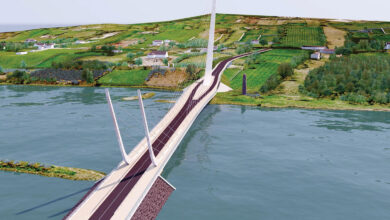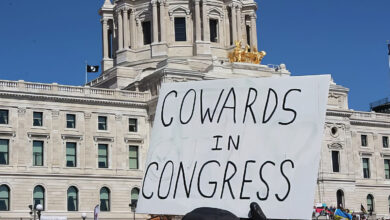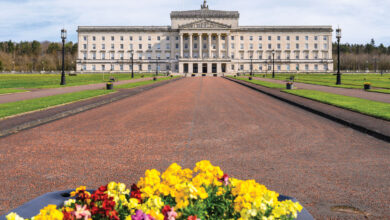AE Russell: Ireland’s forgotten genius
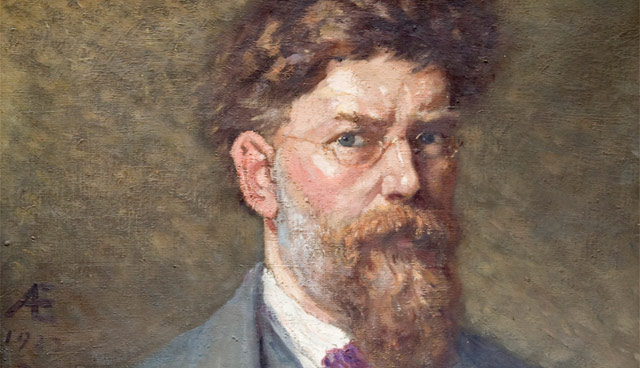
Previously reduced to the footnotes of history, the extensive and far-reaching talents of one of Ireland’s most influential sons have been recovered in a new book ‘George Russell (AE), Lurgan and North Armagh, by co-authors Michael and Brian McKernan. Michael McKernan offers a summary of AE’s life and work.
In recent times the various ‘centenaries’ of the events surrounding the birth of an independent Ireland has led to a renewed public interest in the outstanding leaders of that time. Political leaders such as Pearse, Connolly, De Valera and Collins and literary giants such as Yeats, Shaw and Joyce have all been the subject of retrospective appraisal, both favourable and unfavourable.

Yet in the period from 1900 to 1930 one now largely forgotten figure, George William Russell, better known as ‘AE’, was a leader across just about every sector of Irish life. A political thinker, economist, rural reformer, publisher, editor, poet, artist and visionary. No one else in the history of that time comes close to matching Russell in the sheer breadth of his contribution to public life.
However growing interest in Russell has been seen recently with a festival in his home town of Lurgan, a new book, and a National Society being formed in Dublin.
Russell was born in Lurgan in 1867 and left at the age of 11 when his family moved to Dublin. However, he maintained his northern connections throughout his adult life. He often acknowledged the formative influence his northern childhood had had on him. As an activist it had given him an aversion to violence and sectarianism and although his family wasn’t poor, a loathing of the indignity of grinding poverty.
In contrast, as an artist his childhood had filled him with the colourful visions, memories and images of carefree days exploring Lurgan’s sprawling Brownlow estate with its turreted castle and shimmering lake and parklands. These images later flowed into AE’s poems and paintings and in his later collaboration with author Pamela Travers as she produced ‘Mary Poppins’. Much of the imagery in ‘Mary Poppins’ came from AE’s suggestions, based on his vivid childhood memories of Lurgan.
In Dublin, AE attended art College where he met W. B. Yeats. They were to be friends (and rivals) for the next 50 years. AE’s contemporaries were astonished at his natural ability to draw immediately anything he saw. It may well have been AE’s talent in visual art that persuaded Yeats to pursue poetry instead.
Although Russell never considered art as a career, such was his talent that he became recognised as one of the best painters in Ireland. When leaders of the United States arts community curated a major exhibition of European art in New York in 1913 only three Irish painters, including AE, were invited to contribute. On the poster for the Manhattan event, the greatest exhibition of European Art ever, the only Irish name was Russell — alongside artists like Monet, Cezanne and Van Gogh.
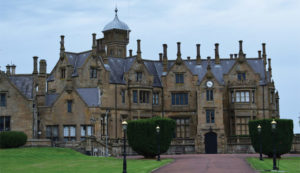
After art college Russell settled down to years of study of Theosophy becoming an avid student of ancient Indian philosophies. He maintained himself working as a clerk in a Dublin Department store. Eventually AE emerged, certain about his role in life and guided by a code which required personal discipline, full deployment of his talents in the service of others and a disregard for reward or recognition.
He joined Horace Plunkett’s Cooperative movement and immediately proved to be a highly effective organiser of rural cooperatives. He went around Ireland forming hundreds of cooperative societies eventually becoming Secretary of the movement and editor of its influential journal ‘The Irish Homestead’. His success came from a pragmatic determination to tackle rural poverty but also his belief that workers on the land deserved respect and dignity. At the ‘Irish Homestead’ he ensured that rural readers enjoyed coverage of politics, culture and the arts as well as all things agricultural.
AE was a prophet out of an ancient age. He was one of the finest, most gifted, and most colourful people I ever knew. Never anything but the utmost humility, simplicity, sweetness and light. May God grant that the Irish may be able to produce such a man again.
— USA Vice-President Henry Wallace Birmingham (writer)
Russell wrote extensively on the economics of sustainable rural communities. His work was admired in Ireland and internationally. In India, Gandhi expressed interest in Russell’s thinking, including how sweeping change could be achieved without violence. Later in depression-torn America, Roosevelt’s administration sought Russell’s advice on rural economics. Russell embarked on several tours of the United States addressing packed meetings, accepting honorary degrees from universities, broadcasting on radio and advising the US Government directly. Much of the thinking behind Roosevelt’s ‘New Deal’ stems from Russell’s ideas.
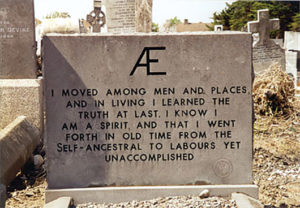
While driving cooperation forward, AE had also been writing poetry and was eventually persuaded to publish it. Like in his painting, AE’s talent shone through and there was an immediate market for him in Ireland and abroad. In the early 20th century he was regarded as being on a par with Yeats. Yeats himself described AE as: “The one poet of modern Ireland who has moulded a spiritual ecstasy into verse…The most delicate and subtle poetry that any Irishman of our time has written.”
AE also encouraged the talent of others using the ‘Homestead’ and later the ‘Irish Statesman’ to showcase new writers. He was the first to publish James Joyce and Patrick Kavanagh and many others. Frank O’Connor described Russell as “The father of three generations of Irish writers”. AE is referred to repeatedly in Ulysses, including Joyce’s famous acknowledgement “AEIOU”.
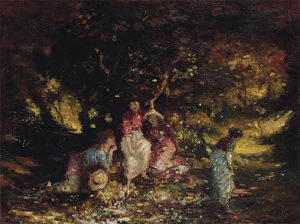
As a writer, Russell was unsurpassed for his challenging commentary on public affairs and his impressively resourceful prescriptions for economic and social progress. Unsurprisingly, many people sought him out for advice and support. This not only included poets and painters, but leaders of cultural organisations, and politicians.
AE knew the revolutionary leaders of the era. He knew them mainly through literary connections — Pearse and McDonagh were both accomplished poets — or through his agricultural reform work. Connolly was an admirer of AE and the two had supported workers during the 1913 Dublin Lockout.
Russell told the poet-revolutionaries that he did not share their views. He was a pacifist and more concerned with the character of any future Ireland than bringing it about by uprising. To this end Russell applied himself to the creation of many of Ireland’s embryonic cultural institutions including the Metropolitan Gallery, the Abbey Theatre, the Cuala Press and the United Arts Club as well as writing a prescription for progressive nationhood in “The National Being”.
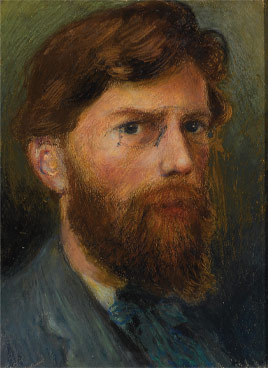
He worked in the 1917 Convention hoping it would bring about an honourable political settlement. He was horrified by the bloodshed of the war of independence and the civil war that followed. In the new Free State he pursued progressive causes, uniquely supporting the suffragettes and women’s rights; calling for respect for Irishmen who had fought in WW1 and opposing conscription and censorship.
AE died on 17 July 1935 in England. His return to Ireland was honoured with an aerial salute as the boat arrived in Dun Laoghaire. The Irish Times reported that 500,000 people took to the streets of Dublin for his funeral. The procession was over a mile long.
Today it is hard to explain how this remarkable man had virtually disappeared into the footnotes of Irish history. However, groups of admirers have recently come together across Ireland to address this obvious deficit.
How George Russell became known as ‘AE’
As a writer Russell adopted different pen-names. Once, opening a book at a random page the word ‘Aeon’ seemed to jump out at him and he was charmed that ‘Aeon’ was a term meaning the earliest living creatures. He immediately used it as a pen-name for a philosophical article. However the printer could only make out the first two letters of his writing and thus ‘AE’ appeared below the article. AE stayed with him thereafter.



